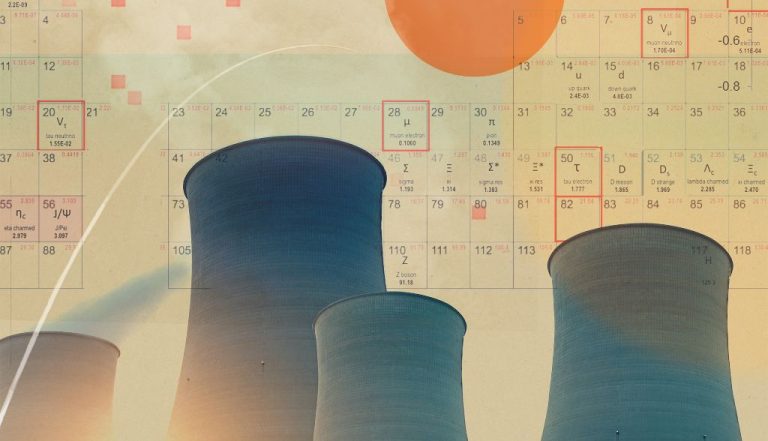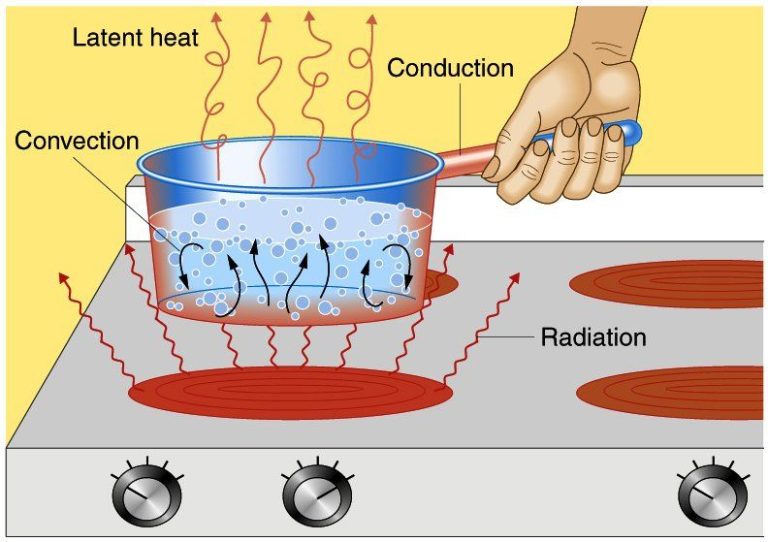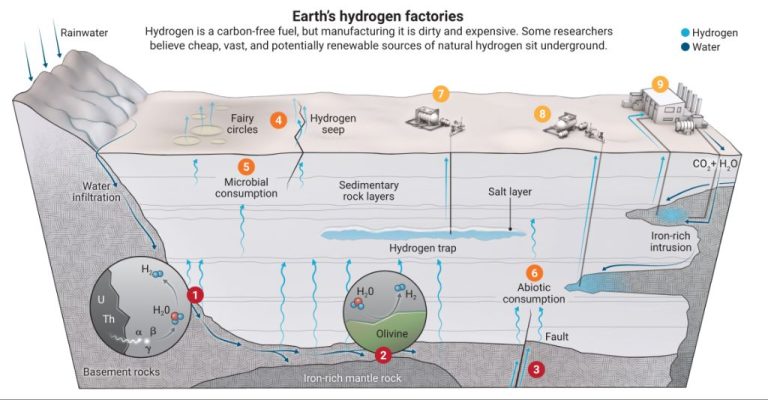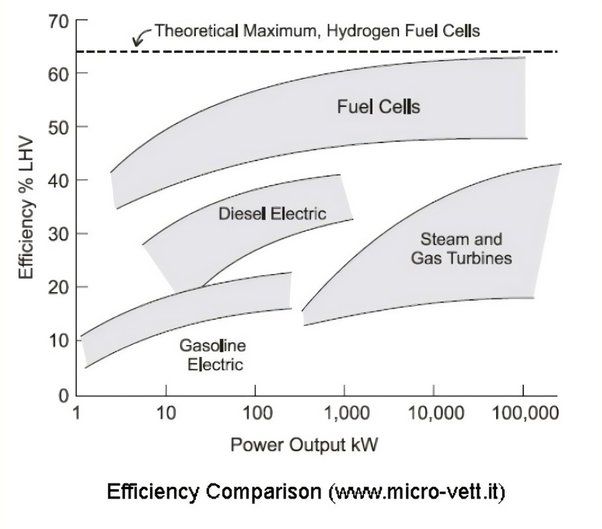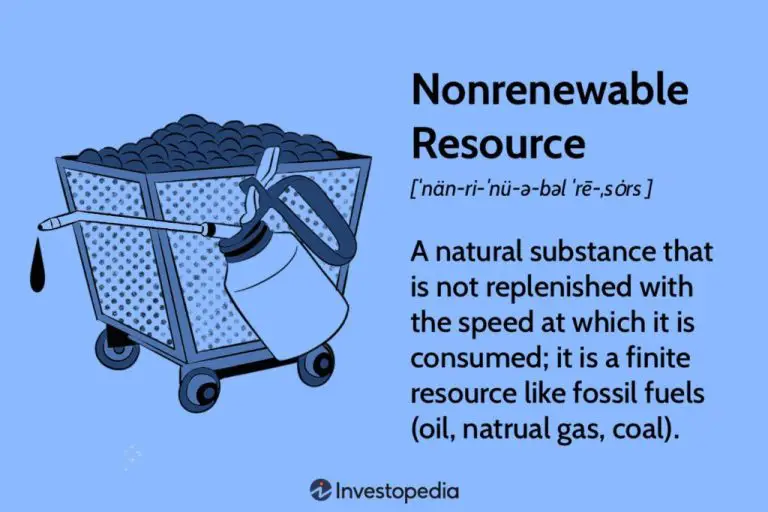Can A Renewable Resource Become Non-Renewable?
Defining Renewable and Non-Renewable Resources
Renewable resources are those that can be replenished naturally over time. They are virtually inexhaustible in duration but limited in the amount of supply available at any given time. Renewable resources include things like solar energy, wind energy, geothermal energy, biomass energy, and hydropower. These resources are considered renewable because they are naturally replenished over human timescales.
Non-renewable resources, on the other hand, exist in finite quantities and will eventually be depleted or exhausted if not used sustainably. Fossil fuels like coal, oil, and natural gas are examples of non-renewable resources. These resources take much longer to form naturally than they do to extract and consume. Other non-renewable resources include nuclear energy and minerals like gold, silver, copper, and aluminum. Once these finite resources are extracted, they cannot be readily replaced in a short period of time.
According to Career Power, “The renewable resources can be used again and again as they are replenished naturally. However, for non-renewable resources, once the original form is used up, it is extinct forever from that place” (https://www.careerpower.in/difference-between-renewable-and-nonrenewable-resources.html). The key difference is that renewable resources can be replenished over time while non-renewable resources cannot.
Examples of Renewable Resources
Renewable resources are natural resources that can replenish themselves over time. Common examples of renewable resources include:
- Solar energy – The sun provides a constant and consistent source of energy that can be captured and converted into electricity via solar panels. Solar energy is renewable and sustainable. (https://www.energysage.com/about-clean-energy/renewable-energy/solar-energy/)
- Wind energy – Wind turbines convert the kinetic energy of wind into mechanical power which is converted into electricity. Wind energy does not produce air pollution or greenhouse gases. (https://www.nrel.gov/wind/)
- Hydropower – Flowing water such as rivers, waterfalls, tides, and ocean currents contain kinetic energy that can be harnessed to generate electricity via turbines. It’s a clean, renewable source of energy. (https://www.eia.gov/energyexplained/hydropower/)
- Geothermal energy – The heat within the earth can be tapped and converted into electricity. Geothermal energy is plentiful and accessible. (https://www.nrel.gov/geothermal/)
- Biomass – Organic materials like wood, agricultural waste, garbage, sewage, manure, and crops like corn can be used to produce electricity, transportation fuels, and heat. (https://www.eia.gov/energyexplained/biomass/)
Other examples include hydroelectric dams, tidal power, wave power, and emerging technologies like algae fuels. Renewable resources provide sustainable, clean alternatives to finite fossil fuels.
Examples of Non-Renewable Resources
Non-renewable resources are materials that do not replenish themselves or replenish extremely slowly through natural cycles. Some key examples of non-renewable resources include:
- Fossil fuels like oil, coal, and natural gas (https://en.wikipedia.org/wiki/Non-renewable_resource)
- Metals like copper, iron, and aluminum that are mined from the earth’s crust (https://corporatefinanceinstitute.com/resources/esg/non-renewable-resource/)
- Rare earth metals that are used in technology and electronics
- Phosphorus and potassium used in fertilizers for agriculture
These resources replenish at extremely slow rates, often taking millions of years to form naturally. This means once they are depleted by human consumption and use, they are effectively gone and cannot be renewed within human timescales.
Renewable Resources Can Become Non-Renewable
Renewable resources like forests, fresh water, and fertile soil can potentially become non-renewable if they are exploited or contaminated beyond recovery. For example, deforestation from unsustainable logging can permanently damage forests if trees are not replanted at a sufficient rate. According to National Geographic, nearly 18 million acres of forest are lost each year due to deforestation. At this rate, certain forest habitats and tree species could be depleted faster than they can regrow.
Fresh water sources like lakes, rivers, and aquifers can be overdrawn if water is consumed faster than rainfall can replenish it. Pollution from industry, agriculture, and mining can also contaminate water supplies, making them unsafe for human use. The US Energy Information Administration reports that 1 in 3 people already live in water-stressed areas. Without conservation efforts, drinking water could become scarce in certain regions.
Soil fertility can decline when over-farming and monocropping deplete nutrients faster than they can be restored. Erosion and salinization from poor irrigation practices can also degrade farmland over time. According to the UN Food and Agriculture Organization, a third of the world’s soil is already moderately to highly degraded due to erosion, nutrient depletion, acidification, salinization, and chemical pollution from human activities.
In addition, climate change caused by burning fossil fuels is disrupting weather patterns and accelerating desertification worldwide. Rising global temperatures and extreme weather events like droughts, floods, and wildfires threaten habitats and food production. According to the IPCC, climate change could reduce renewable water resources by 20-40% in some dry subtropical regions by 2050.
Therefore, while renewable resources can regenerate under normal conditions, overexploitation and environmental damage can overwhelm their capacity to recover within a human timescale. Without better management and conservation, renewable resources risk becoming functionally non-renewable.
Case Study 1: The Aral Sea
The Aral Sea provides a devastating example of how a renewable resource can become non-renewable due to human overuse and pollution. Located between Kazakhstan and Uzbekistan, the Aral Sea was once the fourth largest lake in the world. It was fed by two major rivers, the Amu Darya and Syr Darya. For thousands of years, the Aral Sea was an abundant source of fish and freshwater.
Beginning in the 1960s, the Soviet Union diverted water from the Amu Darya and Syr Darya to irrigate cotton fields in the desert. This caused the Aral Sea to start shrinking rapidly. By 2007, the Aral Sea had shrunk to less than 10% of its original size due to water diversion. The once thriving fishing industry collapsed, leaving Former fishing towns stranded in a desert wasteland.
The salinity of the Aral Sea also increased dramatically as it shrunk, making the water too salty to support fish and plant life. The exposed seabed led to massive dust storms that spread contaminated sand laced with pesticide residues over a vast region. The Aral Sea went from a renewable resource supporting a regional economy to a toxic wasteland in just a few decades due to human activities. This tragic case vividly illustrates how overexploitation and pollution can turn a renewable resource effectively non-renewable.
Case Study 2
Another example of a renewable resource becoming non-renewable is the overfishing of cod populations in Canada’s Atlantic coast. For centuries, cod was an abundant and easily renewable resource for fishing communities in Newfoundland. However, with advancements in fishing technologies and equipment in the 20th century, it became possible to catch cod in far larger quantities than ever before (1).
As early as the 1960s, scientists warned that cod fisheries needed to be carefully managed to prevent overfishing. But fishing continued to accelerate, with ever larger trawlers and more efficient equipment. By 1992, cod populations had declined by an estimated 99%, effectively making cod a non-renewable resource in the area (1). The collapse decimated fishing communities and led to a moratorium on cod fishing that lasted until 2019 in some areas (2).
This case illustrates how a resource that was once renewable can become non-renewable ifextracted unsustainably, without proper oversight or limitations. Advanced technologies allowedcod populations to be depleted far faster than they could reproduce. Better policies and regulationscould have prevented the collapse by limiting catch sizes sooner. This highlights the importance ofproactive management to ensure renewable resources are not driven to extinction.
Sources:
(1) Overview of Unit 3 The Issue of Renewable Energy
(2) The Case of Beijing – Nonrenewable Energy
Preventing Renewable Resource Depletion
There are several ways to manage renewable resources sustainably to prevent depletion. According to the Environmental Specialist job posting by Devex (https://www.devex.com/jobs/environmental-specialist-west-africa-313427), recommendations should be made to government agencies on steps that can be taken to prevent renewable resource depletion and illegal harvesting. Public policies and regulations can be implemented to protect resources and ensure they are used at a sustainable rate. For example, fishing quotas can prevent overfishing of certain species.
At an individual level, people can reduce their consumption and waste of renewable resources. This could include reducing energy and water usage, recycling, and making sustainable food choices (https://vacancymail.co.zw/jobs/natural-resources-managementenvironment-specialist-28582/). Education and awareness campaigns can also encourage more sustainable behaviors. Overall, a combination of government oversight and individual responsibility is needed to effectively manage renewable resources for the future.
Public Policy and Regulations
Public policy and regulations play a critical role in managing renewable resources and preventing overexploitation. According to the Renewable Natural Resources Foundation, the goals of renewable resource management should include “sustainability” and “sufficient abundance and distribution of plants and animals” (https://rnrf.org/policy-principles/). Governments create policies and regulations to align private interests with the public interest in conserving and sustainably using renewable resources.
Policies like quotas, taxes, subsidies, and property rights define who has access to a resource and how much they can extract. For example, fishing quotas are used to prevent overfishing of species like cod and salmon. The U.S. Forest Service uses timber sales contracts to regulate logging on public lands. Many states have renewable portfolio standards that require electric utilities to source a minimum percentage of power from renewable sources.
Regulations can ban harmful practices that deplete resources like prohibiting stream dredging or limiting the take of endangered species. According to a Congressional Research Service report, key issues in natural resource policy include “determining appropriate uses of resources, deciding how much use to allow in particular areas, and choosing systems and methods for allocation and management” (https://crsreports.congress.gov/product/pdf/RL/RL33806). Balancing private interests, public interests, and environmental sustainability is an ongoing challenge in renewable resource management.
Individual Actions
There are many ways individuals can help conserve renewable natural resources in their everyday lives. Here are some tips:
Reduce water usage by taking shorter showers, turning off the faucet when brushing teeth, and only running full loads of laundry and dishes. See this source for more water conservation tips.
Use energy efficiently by turning off lights and electronics when not in use, installing LED lightbulbs, and unplugging devices when not needed. Consider installing solar panels to utilize renewable energy. See this source for more energy conservation ideas.
Reduce, reuse and recycle as much as possible. Purchase products with minimal packaging, reuse items like containers or bags, and properly recycle paper, plastic, glass and metals. Compost food scraps if possible.
Limit use of single-use plastics like utensils, straws, and water bottles. Carry reusable versions instead. Support bans on certain single-use plastics in your community.
Buy sustainably sourced products when possible, like wood from responsibly managed forests. Research companies and choose those with good environmental practices.
Drive less by walking, biking, carpooling or taking public transportation when feasible. Combine errands to reduce trips. Maintain vehicles for optimal fuel efficiency.
Support companies and politicians that prioritize conservation of renewable resources. Advocate for stronger environmental policies in your community.
Educate and encourage others to conserve resources. Small actions by many individuals add up to big global impacts.
Conclusion
In summary, renewable resources can potentially become non-renewable if they are mismanaged or overexploited. Renewable resources like forests, fisheries, and fresh water supplies can be depleted faster than they can replenish themselves naturally. Overpopulation, overharvesting, pollution, and climate change are some key factors that can turn renewable resources into non-renewables if we are not careful.
As the case studies demonstrated, many once plentiful renewable resources like the Atlantic cod fishery have collapsed due to overfishing. Other resources like the Ogallala Aquifer have been pumped faster than rainfall can recharge them. Without better stewardship and conservation, more of our renewable resources could potentially cross the tipping point into non-renewability.
With wise management policies, sustainable practices, and changes to our consumption patterns, we can prevent the depletion of renewable resources. Though renewable, they are still finite and must be utilized responsibly to endure for future generations. The goal should be to balance our usage of renewable resources within their natural rates of replenishment.

